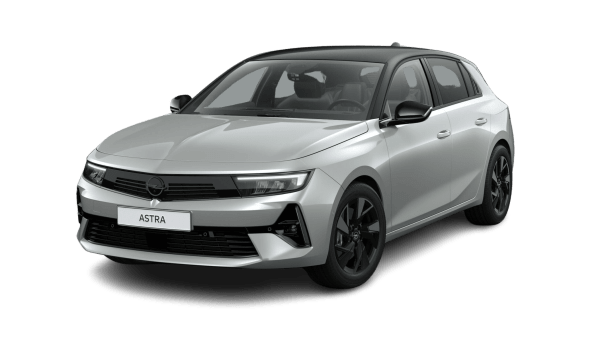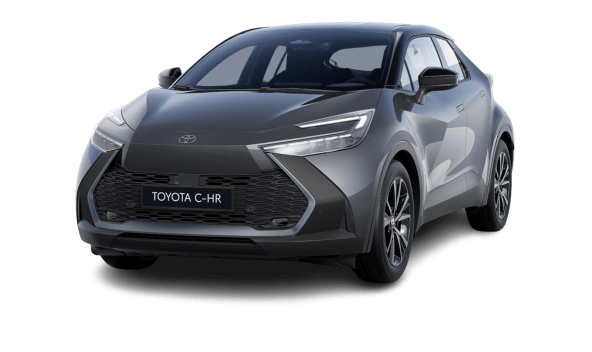Is Buying a Luxury Car Worth the Cost?
Buying a luxury car is a big financial commitment, so it's necessary to weigh the financial implications before choosing your dream car. Here’s how to understand what drives the costs of a luxury car.
Read time
6 minutes
Date
04.20.2023
Share
Key takeaways
- Luxury cars continue to be popular in the U.S., making up 18% of new car sales in September 2022.
- The definition of what constitutes a luxury car has broadened, with prices ranging from $35,000-$150,000 with features varying across brands and models.
- Pros and cons of owning a luxury car vary from better driving performance and higher-quality materials to higher costs for maintenance and potential rapid depreciation.
- A FINN car subscription offers a low-risk way to experience a luxury car for six to 12 months, with all-inclusive monthly payments covering insurance, maintenance, and other essentials.
Luxury vehicles made up nearly 18 percent of new car sales in September 2022 — almost three percent higher than two years before. It seems that regardless of the economic conditions, Americans can’t get enough of them.
But is a luxury car the right choice for you right now? Is it worth the cost? If you’re thinking of buying a new or used car, you have many decisions to ponder—the make and model, standard/electrical/hybrid, compact or SUV? Whether you can afford a luxury model could be another decision you need to make.
To help you, here’s what you need to know about owning a luxury car and the pros and cons you can expect from the experience.
One way to determine whether buying a luxury car is worth it for your situation is to try driving it in via a short-term car subscription. With a FINN car subscription, you can drive a car for as little as six to 12 months, which should be enough time for you to get a good understanding of the car and your driving experience in it. Plus, your monthly payment includes insurance, maintenance, and roadside assistance.
Find your next car with FINN
What is a luxury car?
There is no strict definition of a “luxury car” but you’ll probably know one when you see one. Statista describes the luxury car market as: “Passenger cars of an average footprint around 5m2 (54 ft2), an average mass around 2200kg (4850lbs) and a passenger/cargo volume larger than 3.4 m3 (120 ft3).”
However, the term tends to be used more broadly nowadays. “Luxury” is used in marketing spiel to describe all kinds of vehicles of different sizes from almost any manufacturer with a ”top of the range” model. These cars are generally characterized by their higher price than standard cars. The most popular luxury car brands in the US have typically been Chrysler, Mercedes-Benz, Cadillac and Porsche.
Some manufacturers have a luxury brand as part of the “family”—such as Toyota with Lexus. Other manufacturers like Jeep, which are not usually considered a luxury brand, have recently developed models that cost considerably more than the entry-level models for traditional luxury brand models.
So, the definition of a luxury car has broadened. Here, luxury cars can be defined as those starting at around $35,000-$40,000 and can go up to $100,000-150,000. If you’re considering a limited-edition Rolls-Royce, then it’s millions. And if you opt for another of the undoubted “luxury brand” cars, you’ll be paying a sizeable premium for the name.
What are the main features of a luxury car?
Generally speaking, you can expect at least some of the following from a luxury car as opposed to a standard vehicle:
- Larger size (though not always)
- Higher-quality interior materials
- High-performance engines and transmission systems
- High-quality sound systems
- Telematics (a communications network)
- Extra safety features
- Better sound insulation
- More amenities
- Sunroof
- Aluminum or carbon fiber components instead of steel
- Longer warranties
- Concierge services (vehicle pickup and delivery for maintenance or repairs)
Sometimes, an array of add-ons offered by dealers turns a standard car into one that the owner perceives as luxury — even if nobody else does.
You may decide that your Honda Civic needs a full leather interior, a premium 12-speaker sound system, wireless Apple CarPlay, driver-assist and safety features, and a remote engine start function. This can make it feel like a luxury car and is known as “fully loaded”: often a more affordable way to get the luxury features you want.
Considerations before buying a luxury car
Before falling for the sales tactics, letting your heart rule your head, and buying a new or used luxury car you can’t really afford, consider the following …
Performance
If qualities like acceleration, handling, and braking power are important to you, consider how the luxury car you’re considering stacks up. Many (but not all) provide a higher-performance driving experience and you should do your research first if this is a key factor in your decision to buy a luxury car.
Safety
Increased safety is often a key reason for buying luxury cars. Do the manufacturer’s claims stand up to scrutiny with the test results? Generally, higher quality parts lead to higher safety ratings such as with side/front impact, roof strength and enhanced crash prevention systems. Check out the safety ratings with the Insurance Institute for Highway Safety (IIHS), an independent third-party body that can provide a fair safety assessment of your luxury car.
Extra features
Examine the extra features provided by the luxury car. You might want to make a list of your “must-have features” and see if they are available in a standard model at a lower cost. Many of today’s luxury car features become tomorrow’s standard features so you could wait a year and find those must-have features in a standard model.
It’s easy to want everything now and make an emotional purchase but will you get true value from it?
Value
Is buying a luxury car worth the cost? What value will you get from the premium you pay? If status symbols are important to you, then you’ll likely place a high premium on the “hidden” value in the brand name. For most people, however, the plusher interior, more comfortable driving experience, enhanced safety features and other “concrete” features will provide the extra luxury value.
Remember, too, that the total cost of buying a car is greater than simply the sticker price. The extras for luxury cars are generally higher than for standard cars.
Pros of buying used luxury cars
To summarize, the main advantages of buying and driving a used luxury car include:
- Higher quality driving performance - A more powerful engine, higher quality interior, extra safety features and driver-assisting technology as well as the little comforts (like a heated steering wheel).
- Decent resale value - If you buy a used luxury car, you avoid the rapid depreciation that all new vehicles suffer within the first year of usage (around 20 percent). Luxury cars are not immune from this depreciation but are often in high demand and can retain a good resale value.
- Better maintenance record - Luxury cars are frequently purchased by car lovers who want a little extra from their driving experience. They often take extra care of their investment — but always ask to see the maintenance record.
- Warranty - Most used cars don’t come with a warranty but if the luxury car you’re considering is part of the Certified Pre-Owned (CPO) program, you may be lucky.
Cons of owning a luxury car
Buying and owning a luxury car is not without its downsides:
- Price premium - You may pay for the name as well as extra features.
- Depreciation - New luxury cars are more expensive so their depreciation is more marked. Your particular model may also suffer lower demand because of a high turnover rate from buyers or because it has become outdated — which could lower the resale value when you sell it.
- Higher maintenance costs - It usually costs more to look after and service a luxury car.
- Higher cost of repairs/spare parts - Repairs and parts are likely to cost more, especially for foreign luxury models.
- Decreased fuel efficiency - Luxury cars often feature heavier bodies and more powerful engines, which may not be great for your fuel consumption or efficiency.
- Obsolete technology - Many luxury car buyers are drawn in by the new technology that’s often a feature of these vehicles. However, tech moves quickly and “cutting edge” doesn’t usually last long.
How can you find the right luxury car?
If money is no object, you probably won’t be put off by the potential downsides of luxury cars, which are mainly financial. On the plus side, most luxury cars provide an unbeatable driving performance and all the bells and whistles that improve the driving experience.
But buying a new or used luxury car isn’t your only option to drive a premium car. Rather than hunting for the best luxury car to buy, consider a car subscription. With a subscription, you can get a luxury car for an all-inclusive monthly fee that covers the registration, insurance, maintenance and repairs. You’ll never have to worry about the ongoing costs, wear and tear or market conditions for selling.
A FINN car subscription is a fast, low-risk, and convenient option with no down payment or long-term commitment necessary.
How a FINN Car Subscription Works
1. Choose your perfect car
Pick your next car and select the term and mileage package that’s right for you.
2. Get approved in a few clicks
Submit your information and get approved in under five minutes.
3. Delivery straight to your home
Schedule for FINN to deliver your new car so you can focus on the road ahead.
4. Just hit the road and swap when you’re done
All that’s left to do is drive. When your term is over, you can return the car and pick out something new, or simply walk away.


How a FINN Car Subscription Works
1. Choose your perfect car
Pick your next car and select the term and mileage package that’s right for you.
2. Get approved in a few clicks
Submit your information and get approved in under five minutes.
3. Delivery straight to your home
Schedule for FINN to deliver your new car so you can focus on the road ahead.
4. Just hit the road and swap when you’re done
All that’s left to do is drive. When your term is over, you can return the car and pick out something new, or simply walk away.








